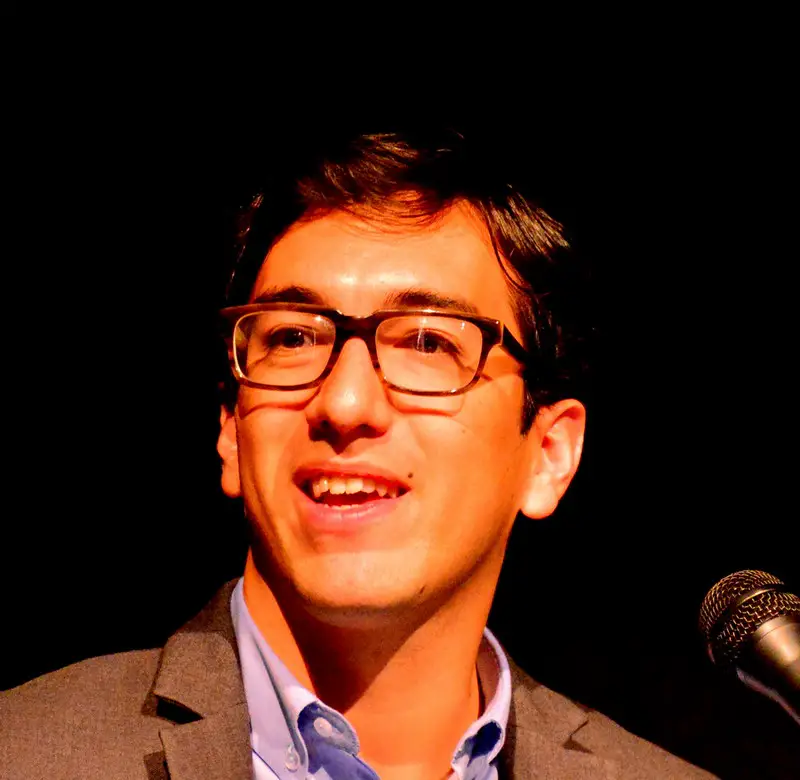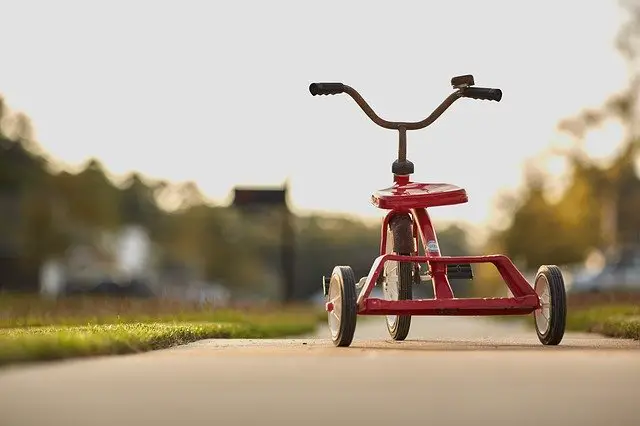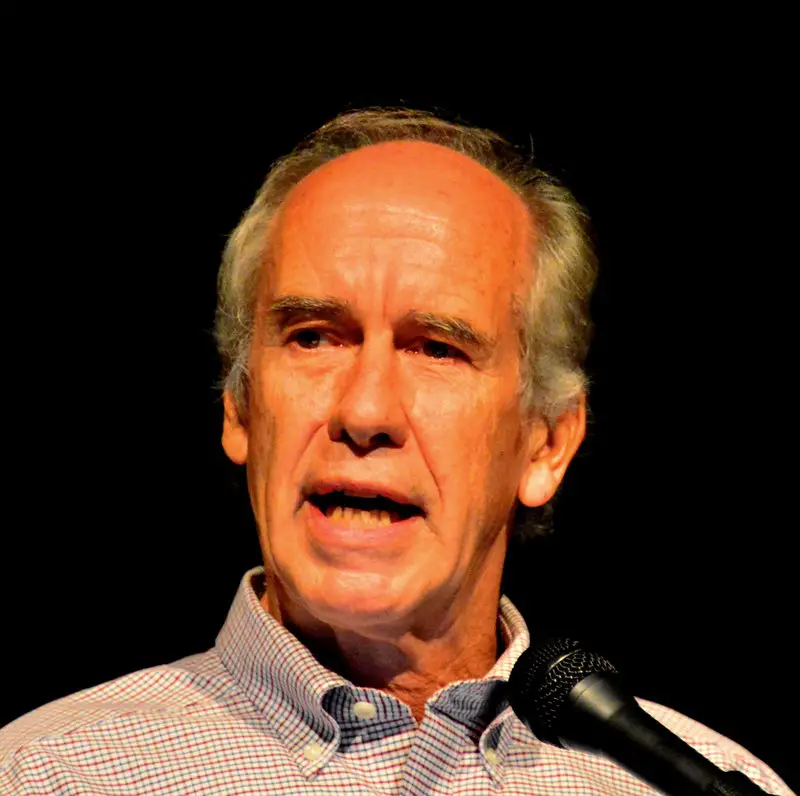Suppose you’re brought to choose between having a juicy cheeseburger or a no-frills kale salad. Although it’s sure that the salad is clearly better for our health, the majority of us will choose the tempting burger.
The same thing occurs when the time comes to decide which one to side by; empathy or apathy. It’s usually an attractive matter to ignore other’s suffering instead of trying to lend the hand of aid. Let’s be realistic – acting from the good of your heart is difficult.
Well then, what should make your mind on empathy? Alright, from the beginning, it just sounds right – empathy lets us test the good energy we have and assists us to have relations with people. And maybe, more importantly, empathy incites us to assist people who don’t look like us in terms of physical appearance. On the other side, a few empathetic individuals find it difficult to make relationships and live in more sadness and isolation.
If you’re hurting from a short of empathy or you’re getting smashed beneath a massive feeling of empathy, this summary presents you a clue.

Chapter 1 – There’s a probability to be more empathetic simply by accepting that it’s in your ability.
I understand what you’re going through. For numerous people, this phrase represents empathy. Yet for sure, empathy is way more sophisticated. When we empathize with other people, we might react with them in several various forms. This could reveal realizing their emotions, sharing it with them, or hoping to enhance their situation. Thus, the question is; whether you’re instinctively empathetic or is empathy a virtue you can acquire?
Have you ever noticed a person utters words such as “once a cheater, always a cheater”? Such sayings are clues for a view in psychological fixism, the case that someone’s personal features can’t develop.
There’s only one issue with psychological fixism – it’s not proved by scientific evidence.
Regardless of what the trivialities say, the mind is in progressive development. Taking lessons for a musical instrument, for example, makes segments of your brain grow. While other segments of your brain can shrivel because of sadness or long-term pressure.
Thus, what other option for fixism is there? That would be psychological mobilism. This concept suggests that DNAs do involve the recognition process of parts of our features. Nevertheless, we don’t merely have certain qualities such as intelligence or empathy. Rather, each person has a span we can accomplish within each quality.
During our lifetime, we proceed towards the higher or the lower edge of our empathetic span, beginning with childhood time. Kids of empathetic fathers and mothers are more benevolent, caring for others, and have magnified capacities to feel with people’s sentiments. And unfortunately, kids who live in short of goodness reveal empathetic lacks the same as those existing in psychopaths.

Not only does the study prove mobilism, but there’s another massive advantage. Mobilists are scientifically more empathetic than fixists, and just switching to mobilism can right away prompt your scale of empathy.
In research, the principal investigator and two associates introduced a gathering of participants with two journal posts on empathy. A post was composed by a fixist point of view, and the other from a mobilist. Regardless of which post they read, subjects were assured it was true. Every subject had completely been transformed into either “new fixist” or a “new mobilst”.
What were the results when it came to empathy? New fixists didn’t have empathy with people different from them – just with those who share with them their physical appearance. New mobilists, on the contrary, showed empathy with all people.
Do you have any idea what this reveals? if this section has transformed you into a mobilist, you might be more empathetic in the first place!
Chapter 2 – You can cultivate a greater sense of empathy by little changes in viewpoints.
How much power do you think you have over your feelings? when you see an image or watch a movie, for example, can you decide to be very pleased or shed tears, or is your response spontaneous?
Perhaps it sounds insane to debate that we can govern our emotional states through the mental processes. Yet, give it a thought. What do you do best before a game match or a tough workout at the fitness club? you bring your ragest, most fast-tempo songs to boost yourself up.
Somehow, we’re regularly deciding how to sense to best suit a certain condition. Thus, how can we decide on feeling empathy in advance? An influential manner is by pushes or little shifts in habits that can drive you to greater actions in the end.
At the peak of the AIDS pandemic, when the shame overwhelming the illness was high and infected ones were usually condemned for their status, psychologist Dan Batson led an amazing trial.

Batson collected a number of students from the University of Kansas and made them listen to a tape of Julie talk, a young lady who has been identified with HIV. The students had to listen carefully to Julie and perceive the way her infection shaped her emotions.
When the students were done listening, they felt more empathetic with Julie than before. This result wasn’t a big shock. What was a shock was that the students also sensed more empathetic with every person having HIV or AIDS.
When pushes such as the recording in this experiment add guidance, the developments in empathy it creates are usually in the short-run. How about you wish to have more of a permanent development?
Neuroscientist Tania Singer and her associates lately revealed a resolution to that issue. In a period of 24 months, over 300 human subjects, they conducted an excessive training program related to Metta, or as so-called loving-kindness meditation. it concentrates on raising health conditions and easing hurting. Every day, subjects were grouped in pairs to exercise empathy together.
The outcome was outstanding. When the course was finished, the subjects’ concentration ranges had developed, and their capacity to specify their own feelings and people’s. Moreover, they’ve been more charitable and sensed the higher urge to help those who are suffering. To add more surprise, MRI results demonstrated that empathy-related segments of the subjects’ brains had developed.
Chapter 3 – High generous appeals towards people who are not like us can raise our sense of empathy for them.
In 1960, 5 percent of Republicans and 4 percent of Democrats stated they would be unhappy if their son or daughter got married to a person from the other party. In 2010, those figures expanded totally, to 50 percent of Republicans and 30 percent of Democrats. Although our higher understanding of the different conservatively minor parties, are we unlucky to sense hostility every time for people?
As a case study, Tony McAleer, for example, a former skinhead. Having endured rough times when he was a child, Tony was afraid passionately, and his scores started to go down. At last, he was seen with bad people. When he grew to a young adult, he was marked as a public figure in the Canadian white power movement.
While time went through, Tony started to withdraw from the movement, having classes to improve his qualities. This was when he and a leadership trainer called Dov became friends. The friendship between both grew, and one time Tony told Dov his secret about being a skinhead in the past. He was surprised when Dov informed him that he used to be Jewish – yet, that he remains his friend Regardless of Tony’s history.
Tony’s narrative is, in fact, very normal. Usually, hatred gang members like Tony lack the self-compassion – or the capacity to conciliate with themselves after their faults. However, when they see that they, as well, deserve to be loved and respected, their hatred is usually gone.
Self-compassion is prominent, yet, to fulfill the empathy package so is compassion for people.
The contact approach suggests that the greater we understand people we consider strangers, the less we reject them. That’s meaningful – if we, in every chance, accompany people who are unlike us, our hatred comes to be false and we look at them as mixed ones exactly as ourselves.

Nonetheless, communication is not the answer all the time. Seldom, it can heighten tensions between societies. On the whole, communication may be most profitable when its aim is to create understanding by turning a current power structure upside down.
An excellent demonstration of this was a study that targeted the increase of empathy and perception between Mexican immigrants and white Americans. The two societies were regrouped into pairs, and one in a pair was assigned to prepare a short essay about the difficult times their community is encountering. The other one in the pair shall read and comment on the essay, then forward their reflection to the one who wrote it.
As you might predict, the Mexican immigrants sensed more hatred towards the Americans after they read the objections of the wealthier, more dominant group. On the other hand, they had good emotions about the Americans after getting the opportunity to speak about their own problems. Thus, when small communities are brought to join those in dominance, it may be profitable to give voice to those who are raised not to speak at all.
Chapter 4 – Narratives can assist us to understand and see common ground with others who are not like us.
Knowing that fiction does concern the lives of imaginary individuals, the characters and their issues still look genuine to us as we’re reading. We realize that narratives can make us smile, laugh, and cry. Yet, they may have the capacity to raise our empathy as well.
The influence of stories could also be employed to assist the US most helpless groups – ex-convicts.
Established in 1990, the Changing Lives Through Literature program had the ultimate aim of reblending ex-convicts into the community.
To initiate the program, Judge Bob Kane chose convicts with extended arrest records and a high chance of recommitting a crime. He approved to reduce their penalties if they enter a reading group chaired by his buddy, English Professor Bob Wexler. Every two weeks, the participants gather in Wexler’s class to debate about traditional novels such as Hemingway’s The Old Man and the Sea.
The narratives about loss and redemption they reviewed gave participants another path to visualize themselves. The community has named ex-convicts as “bad guys”, yet, the narratives showed them they were human who deserves decency and honor. from the participants in Changing Lives’ fist four classes, just a fifth of them commit further violence, opposing 45 percent of ex-convicts in a comparative group.

The narratives of reconciliation too assisted inhabitants in Rwanda, which in 1995 lived the most crucial events of racial discrimination in the past. Within only a quarter a year, most of the Hutu group committed genocide against Rwanda Tutsis.
Years passed the genocide, Rwanda remained to face the outcome, in the shape of governments and society courts. A broadcast drama named Dawn gave an efficient closure.
New Dawn directly averted to approach the genocide as a Hutu. By the novel of New Dawn, Rwandans could deliberately start to recover and reconcile with each other.
The project’s target was accomplished in a grand manner. Experts who experienced psychological impacts of the project revealed that the New Dawn audience lived heightened empathy for Tutsis and Hutu, compared to the audience of other broadcast shows.
New Dawn encouraged trust, too. One of the show’s major performers recorded messages talking about political issues concerning the genocide. After listening to her well-known voice, Rwandans showed more trust toward Rwandans of different races.
Chapter 5 – Pretty quiet empathy can be tiring – but raising the correct sort of empathy can be the right antidote.
If you’ve ever considered an ill person or elderly relative, you recognize how hard a work it can be. And the figures surely show that. Caregivers pay massive parts of their time and efforts to assist the people they care about, which usually ends with increased rates of despair and worse total well-being.
Do we have an idea of how useful empathy can be, yet, is it possible to be much empathetic as well?
Empathy is precisely prominent in caregiving professions such as nursing. Patients who have empathetic doctors are more likely to clinch to medical recommendations and demonstrate more happiness with their help. Yet, caring for the ill and always seeing death id tiring, and empathy usually happens at the expense of the doctor’s own well-being. Consequently, formerly empathetic doctors usually burn out eventually, leaving their jobs, or not treating their patients with humanity to form an emotional gap.
Most of the time, caregivers should provide all the empathy they’ve got without having any in return. Yet, in fact, caregivers require compassion at the same degree just like their patients do.
In such cases are where projects like RISE steps in. RISE, or Resilience in Stressful Events, is a peer-to-peer empathy hotline that specialists in caregiving can contact to speak about emotional taxing occasions such as patient deaths or hospitals’ treatment fallacies.

This judgment-free cure of empathy has impacts reflecting in societies of caregivers. In research, nurses who practiced RISE were less possible to have a vacation or break from their duties than nurses who didn’t practice RISE.
To caregivers, the issue usually doesn’t concern a lack of empathy, yet, rather, a quiet deal of the false kind of empathy. The distinction here is limited to depression against care.
Depression makes people adopt the suffering of others, sensing it unreasoning themselves. People who simply get depressed are very empathetic, yet, they avert states where they might have to sense others’ suffering. In addition, depression usually drives people to mental collapse. On the other side, caring includes having compassion for others and the desire to aid them with their pain.
Today, scientists are experimenting with meditation as a method to raise empathy and eliminate depression among caregivers. Till now, the outcomes have been quite encouraging – those who have done meditation-based courses showed declines in tiredness and higher empathy. By concentrating on caring, caregivers can preserve their own emotions while sustaining their emotional relations with patients.
Chapter 6 – Designing societal systems with a high empathy level could increase empathy on a widespread range.
We’ve all known the saying “monkey see, monkey do”. When a rule is codified and we witness massive groups of people doing the same thing, it turns to be more simple to follow the stream. Could this policy also be implemented for empathy? if our organizations embrace empathetic norms, that could be the initial phase for a jointly more empathetic community.
An organization that could precisely implement an empathetic scheme is law enforcement.
Not as it was before, several administrations today register for the “warrior mentality”. This provokes them to see themselves as fighters rooted in threatening societies instead of peaceful guards. Yet, luckily, few projects are paying energy to replace that.
At the Washington State Criminal Justice Training Commission or CJTC, agents finish a classic safeguarding practice and allocate quiet time shooting rounds at the firing range. Yet, what remains from the practice is completely offbeat. Agents are urged to handle an open, casual manner instead of a formal army pattern. They have lectures on emotional intelligence, ethnic bias, and mental illness. And in their practical education, they concentrate first on de-escalation rather than on violence.
This kind of practice applied a massive impact. CJTC bachelors are more caring in their duty than other officers, and those who finish courses such as CJTC’s have been seen to utilize force 30 percent less usually than their colleagues.

School systems, as well, have their own copy of the warrior mentality. Throughout the decades, zero-tolerance systems, where students are directly dissolved for getting involved in “threatening behavior” have collapsed.
Zero-tolerance systems are designed to prevent violence and impose order. All too often, though, they just don’t do that. And tutors committed to the system turn to be in short of judgment, concentrating on spelling out the so-called naughty children from their school.
Genuine programs have been processed to produce fresh policies to promote compliance to a more empathetic pattern. In an incident, Betsy Levy Paluck asked New Jersey mid-level schoolers to classify the worst communicative issues within their schools – problems such as bullying and rumor-spreading. Then, the children designed campaigns and hanging posters all over the school to support kindness.
What happened? Students showed more care for each other, and disciplinary matters plunged. This means caring systems produce better people.
Chapter 7 – Digital systems can take us toward more or less empathy.
It’s well-known that technology can extract our darkest side of ourselves. It’s the advantage of smartphones and computers that enabled us to simply bully and hurt others using the defensive buffer of a screen. and the brutality, for sure, paves the two sides.
Besides the destructive psychological price of being ridden, our genuine technological status has more expenses too. People have fewer empathy statistics in places with more levels of internet service, and those who use the internet for long times show increased disorder coping with other people.
Luckily, some digital solutions are good. It can also be deployed to cultivate empathy.
Koko, for example, a bot made to assist strangers anonymously aiding each other. Through Koko, a person can report a case about the trouble they’re facing. The system will, after that, forward the message to the public to gather their responses with helpful words. When the person who reported the problem is waiting for replies, Koko requests people to send their replies with their helpful words to other people.
Koko prompts lively writing, which has been seen to relieve distress. Meanwhile, aiding people provides them with a feeling of satisfaction and reduced stress. From the time it launched, Koko has been implemented into Facebook, Twitter, and Kik.

Is there another way in which technology can assist? The writer and a group of his higher education students had a clue. They chose to experiment with the possibility that they could use Virtual Reality technology to raise people’s empathy for a certain helpless community – the homeless.
To achieve this, they invented a convincing Virtual Reality system that takes individuals into the world of Ray and Ethan, an imaginary father and son who begin at encountering ejection from their home, and in the end, they take a bus as their place of living.
When the VR program finished, participants were more able to help with a good priced housing initiative and expressed much desire to grant the cost of local harbors. what’s more? One month beyond the experiment, participants remained concerned about the initiatives to aid the homeless and less possible to humiliate them.
Just consider what other issues we could try through the efficiency of VR – spending one day in the life of an elderly one or from other skin. It can be simple to attack technology for our social isolation. Yet, it has various efforts to group us back together once more, too.
The War for Kindness: Building Empathy in a Fractured World by Jamil Zaki Book Review
Empathy doesn’t just feel good, but it also brings too many efficient advantages to our well-being – on the individual scale as well as the societal. Deciding to have empathy is hard, and it usually means to have huge shifts in viewpoint and behavior. Yet, the proof is plain and obvious: we can eliminate brutality with goodness.
Keep a private journal of your feelings.
Psychologists recognize people with heightened emotional granularity as being improved at the capacity to cope with their emotions and determine their feelings exactly. This feature is advantageous – if you have increased granularity, you have less possibility to get involved in bad habits such as binge-drinking or self-harm. To heighten your emotional granularity, try to preserve a private journal of your strongest emotional incidents of the day and describe these feelings in detail, every day for two weeks.
